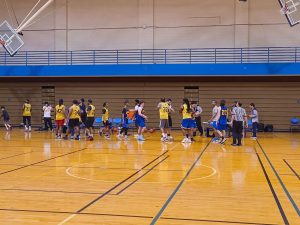NEIU wins Tree Campus USA for the fifth consecutive time
March 10, 2020
For the fifth consecutive year, Northeastern Illinois University won the Tree Campus USA award. Sponsored through the Arbor Day Foundation, the program recognizes both two and four-year colleges and universities across the country that keep on-campus trees healthy with the help of students and faculty.
The geography and environmental studies, biology and environmental science departments each contributed to NEIU’s award-winning efforts. Pamela Geddes, a biology and environmental science professor whose contributions helped NEIU’s candidacy, spoke with the Independent about what goes into receiving the award.
Each college or university entered must meet five core standards, including an established campus tree advisory committee, a campus tree-care plan, a Campus Tree Program with dedicated annual expenditures, Arbor Day observance and an available service-learning project.
According to Geddes, a campus tree advisory committee consists of students, faculty, facility management and community representatives. “We have been maintaining a campus tree advisory committee that meets yearly, sometimes more often. Not only do we talk about the status of the trees on campus but we also plan for yearly activities,” Geddes mentioned.
NEIU instructor Robyn Flakne teaches a forestry course at NEIU. “A lot of [creating the tree care plan] is student-led,” Geddes mentioned. With her students, Flakne put together the tree care plan.
Aiming to achieve a variety of goals, Flakne hopes to both influence seasonal care for trees and educate students on what to do should a tree fall sick. In the past, the tree-care plan helped trees on campus. “We had many trees that were infected by [Northeastern Asian jewel beetle] the emerald ash borer so many of the ashes on campus have been eliminated because they were infected. There is usually a plan to try to replant with newer trees so we are keeping the number and kinds of trees steady,” Geddes added.
Removing infected trees ensures a healthy environment for other trees to flourish. “We have been trying to prioritize getting other trees planted to replace the ones that we were removing. I think that has been a really good and consistent operation from facilities management to try not to lose trees and remain stable at the number of trees,” Geddes mentioned. “ Ideally, we want people to acknowledge the fact that trees are not only an aesthetic thing, they are actually performing a service that is very useful for humans, like purifying the air.”
“Every year we look at the expenses with facilities management and they have an itemized budget just for the tree care on campus.”
To maintain a campus tree program with dedicated annual expenses, Geddes said “we communicate with facilities management, and we do a tally of the budget that is spent caring for the trees on campus. This includes supplies, labor for facility staff, volunteer time, equipment spent on the trees or even money to purchase new trees.”
NEIU celebrates Arbor Day to spread community awareness about the importance of trees. “We do this during the spring semester because Arbor Day is celebrated on the last Friday of April, many times coinciding with the celebration of Earth Week,” explained Geddes. “In the past few years, we have made it a week-long celebration filled with events related to environmentally oriented things and we include Arbor Day as one of the topics of the celebration.”
NEIU also offers service learning where students can “carry their educational experiences with the trees on campus.” Along with helping with school organizations, students can get active throughout the community, including establishments such as the North Park Village Nature Centre. “We have been really good at partnering with other people in the area to have students learn about trees in these events.”
By maintaining the five standards, NEIU can continue to maintain healthy campuses. “Every year we make sure that we have an outstanding Campus Tree advisory committee,” she mentioned. “The tree care plan, once it’s written, is pretty stable unless there is something that we need to change it because it is very comprehensive.”
“There will soon be an accessible map where students will be able to learn more about any tree on campus” Geddes added. By looking at the tag that is unique to that tree, students can learn the tree’s age, size and species.
Geddes also specifically mentioned the contributions that facilities management makes toward keeping the trees on campus healthy. “They are the ones that are continuously on the ground working with the trees, pruning, planting or replacing sick trees. And it’s a daily thing, no matter how cold or hot, they are out there doing the work with the actual trees. They’re so dedicated to maintaining healthy trees on our campus and it’s a pleasure to get to work with them.”








